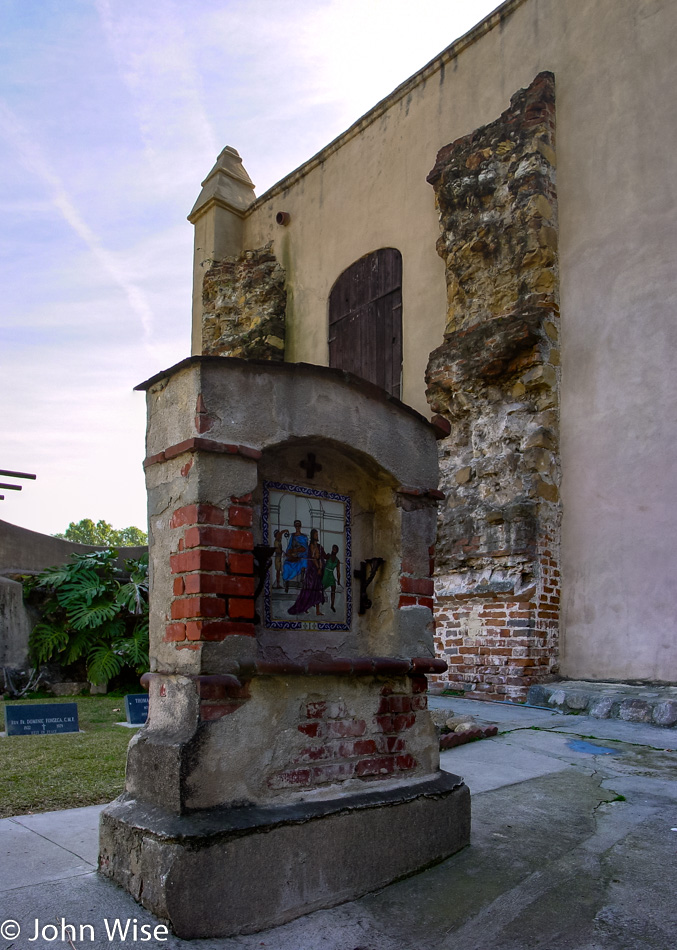
Mission San Gabriel Arcángel in the Los Angeles area was the first mission I ever visited as a kid while on a field trip in Junior High. The Mission San Gabriel Arcángel is only about 12 miles west of where I grew up in West Covina.
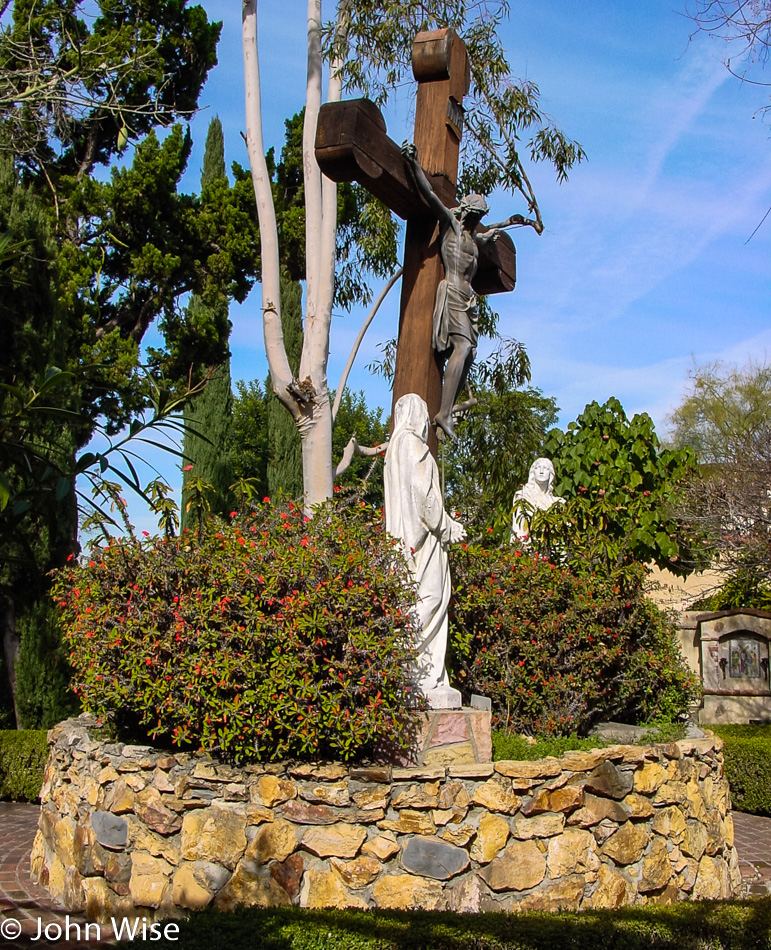
Twenty-one missions were built between 1683 and 1834 along a 600-mile length of road known as El Camino Real, or Royal Road, from San Diego in the south to as far north as Sonoma, California, and are roughly 30 miles apart to facilitate travel on horseback. This was the fourth mission in the chain.
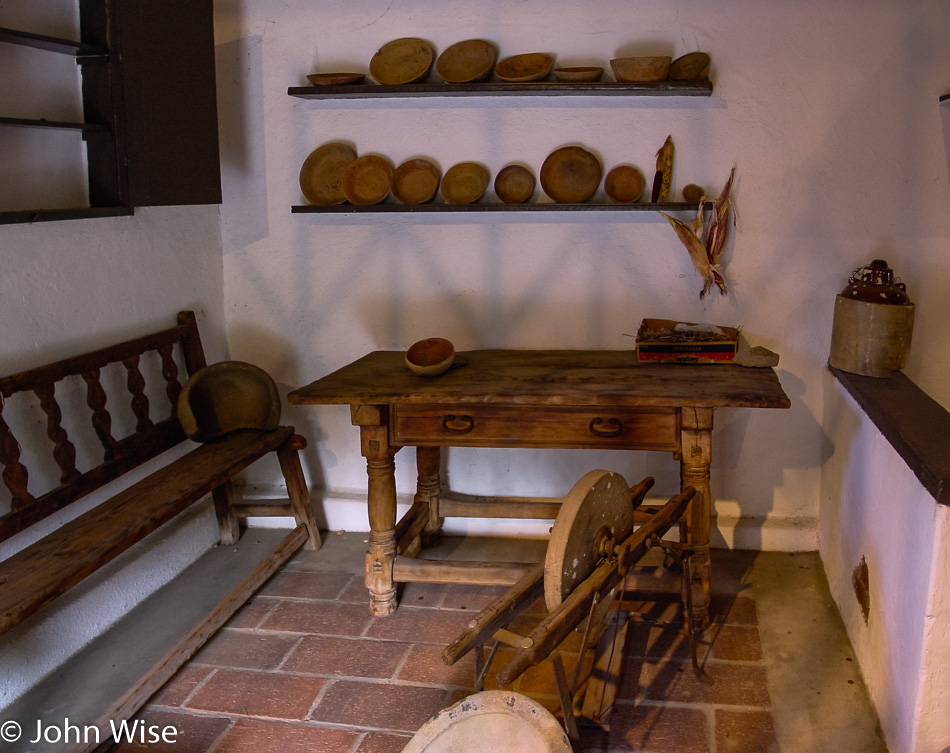
There are many exhibits and artifacts on display at the mission, which also creates a learning opportunity.
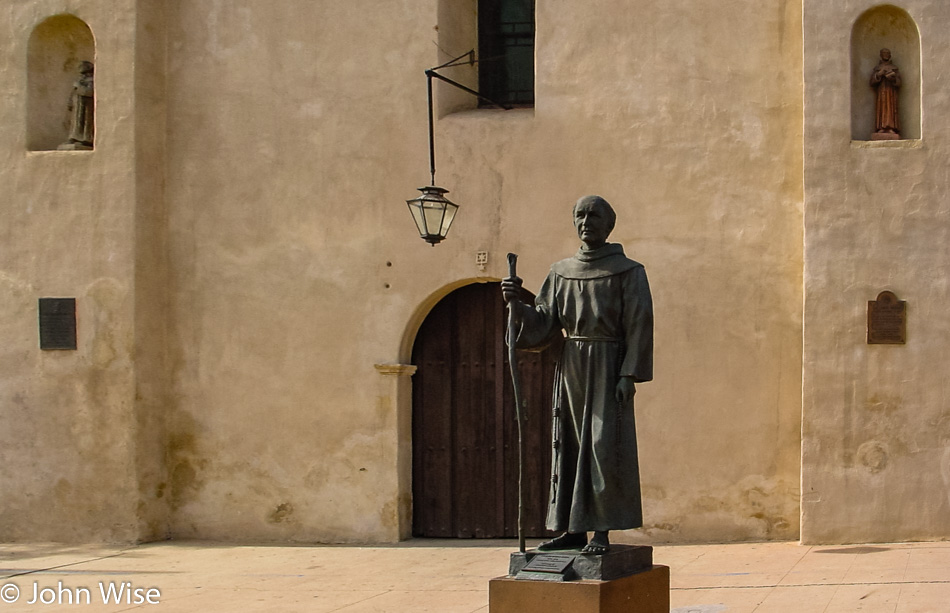
This is Saint Junípero Serra, the founder of 9 of the 21 missions that were built in what was known at the time as the Province of Las Californias, New Spain, before it became part of the United States. It was back in 1988 that Pope John Paul II beatified Serra, elevating him to sainthood.
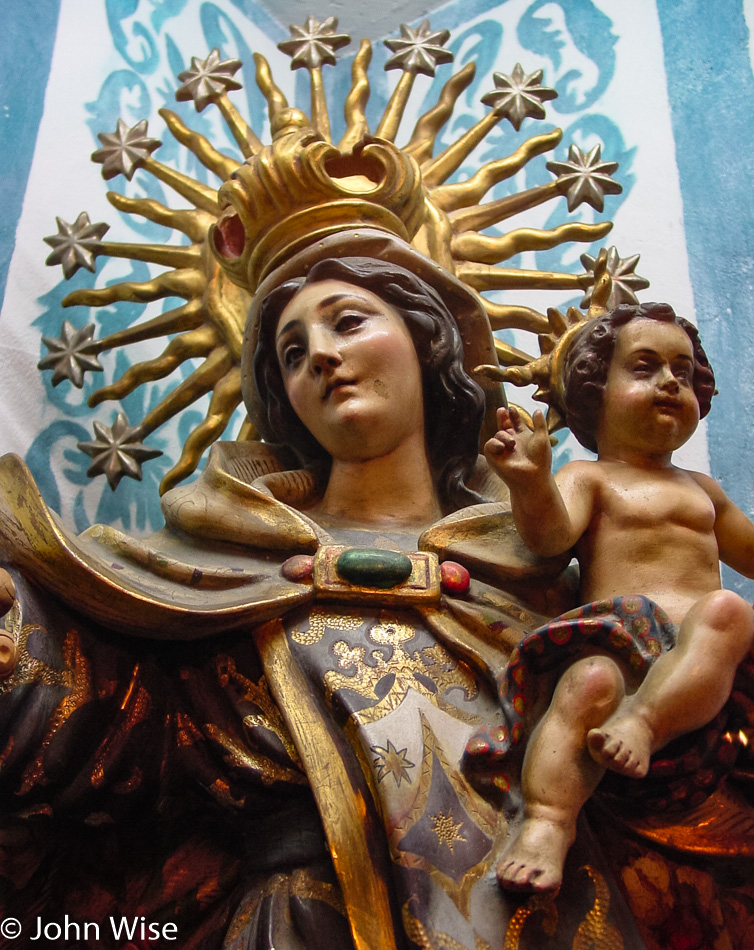
From San Gabriel, we drove northwest to Mission Hills to visit Mission San Fernando Rey de España. Baby Jesus and his mother, Mary, were figuratively there to greet us.
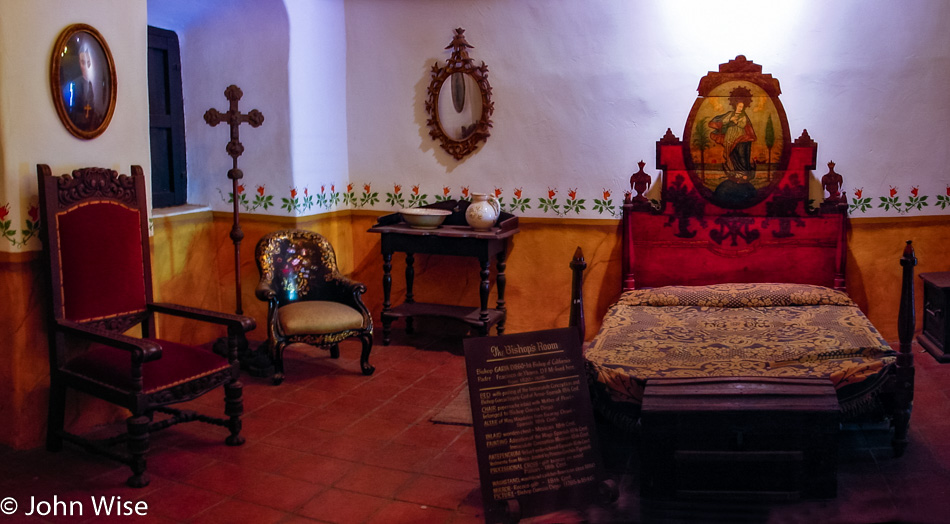
I’d like to be snarky and say, “Junípero Serra once slept here,” but that would likely be a lie.
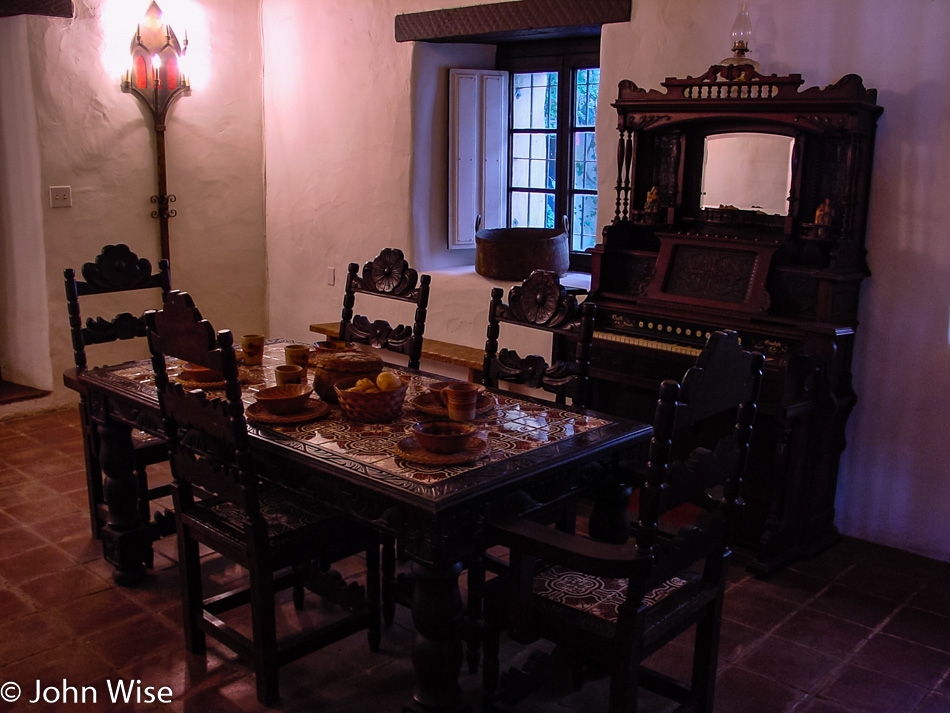
Continuing with the snark, I could try, “This is the actual table where Jesus and his 12 apostles…..” I should stop with this.
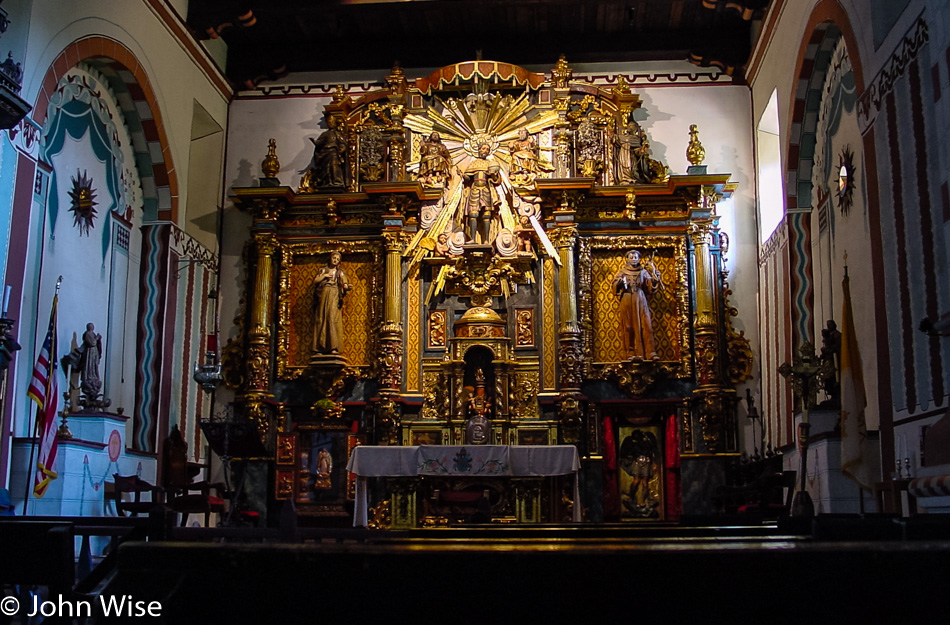
The altar from Mission San Fernando Rey de España.
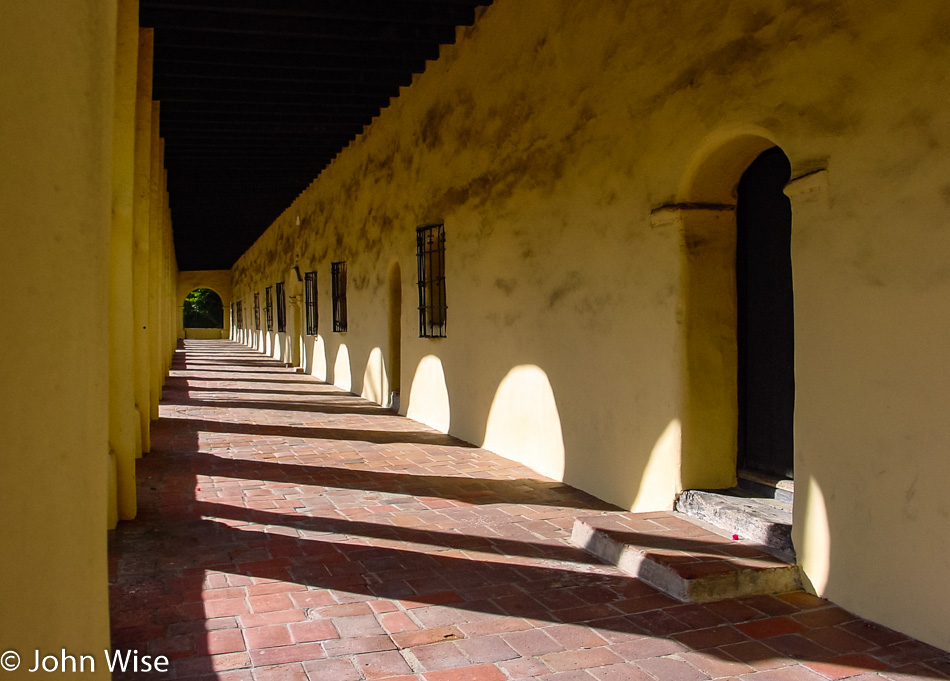
The Spanish influence on architecture in California is unmistakable.
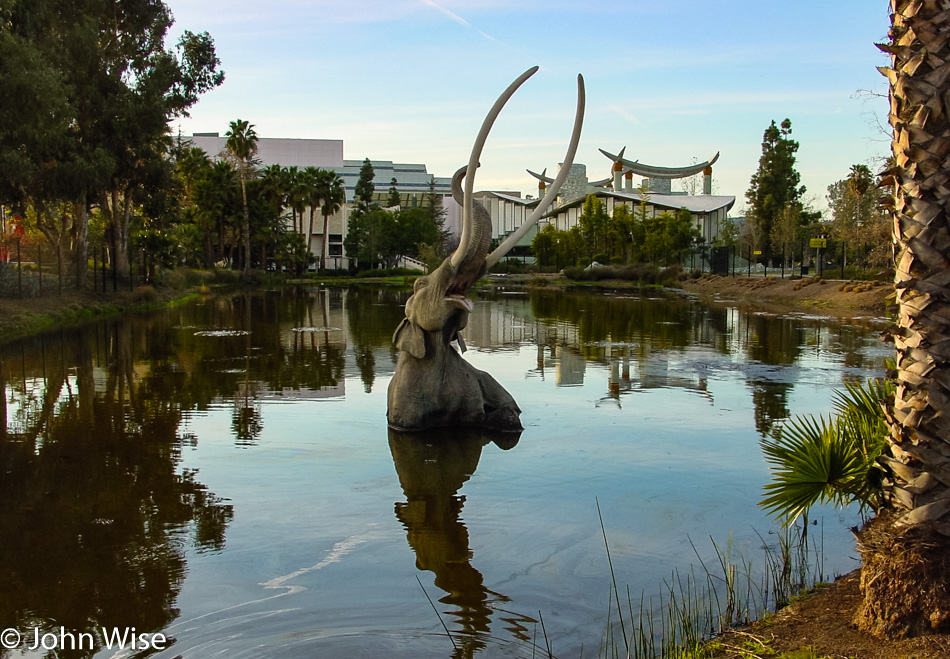
Taking a break from the missions, we headed for a secular museum. Although we were not here to visit the La Brea Tar Pits on this trip to California, we were going next door to the Los Angeles County Museum of Art.
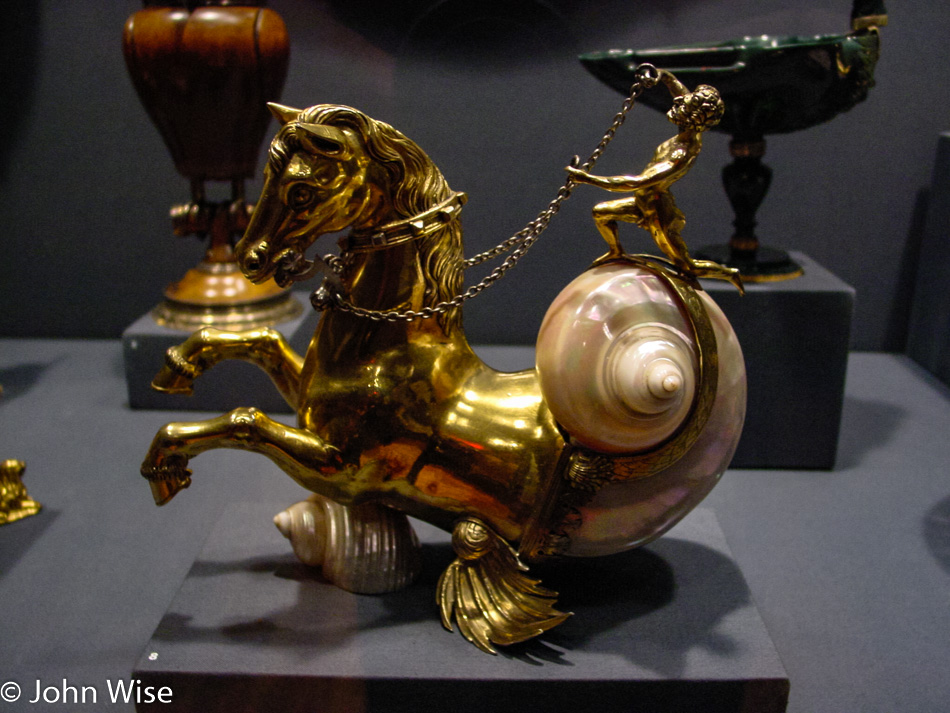
Because art inspires us to enter the imagination of someone else as opposed to basking in the beauty of nature that follows certain rules, we see within other’s creations the breaking of rules and making new realities.
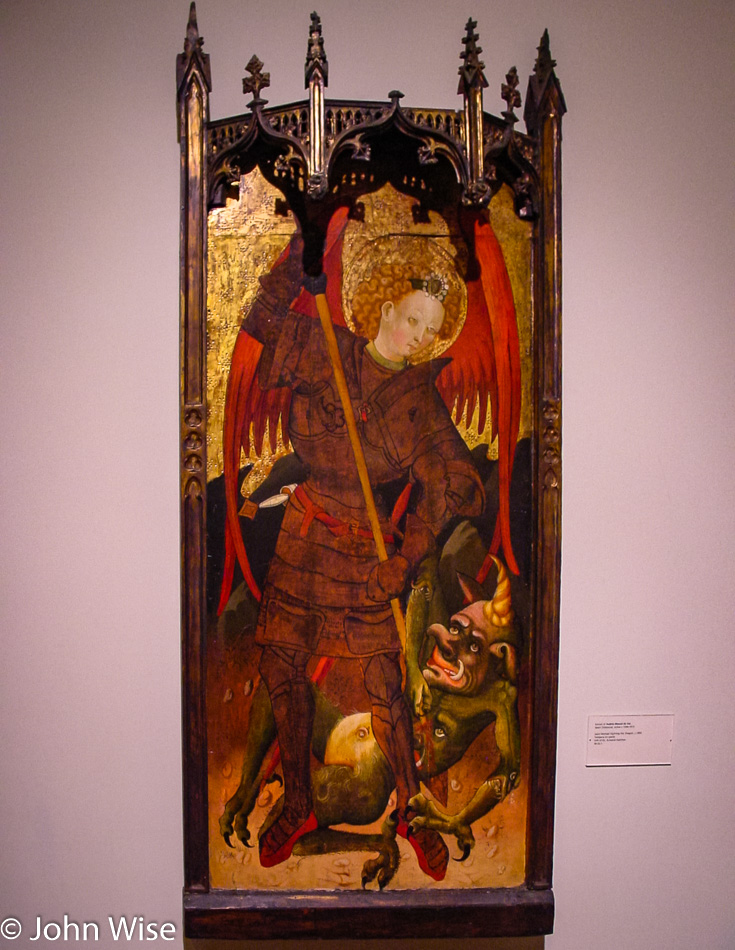
This work is from Andrès Marzal de Sas (school of) and is titled “Saint Michael Fighting the Dragon.” I can’t help but think of Matthias Grünewald, who painted the Isenheim Altarpiece (currently housed in Colmar, France) when I saw this.
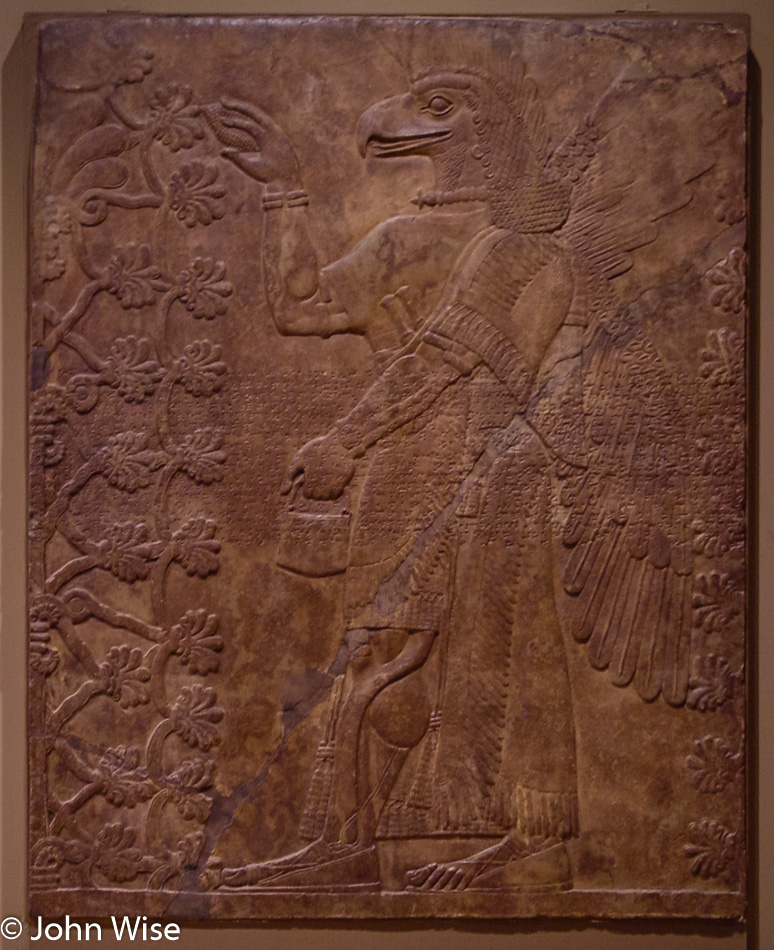
This eagle-headed deity is from Iraq in the 9th century B.C.
When visiting museums, there are a thousand things to see, millions if not billions, when you consider the details in each object or painting. We can never see a fraction of what’s here, even if we glance at every object on display. At best, we might learn of something out of history we didn’t know about that acts as the spark to dig deeper into a subject matter we hadn’t considered before these moments.